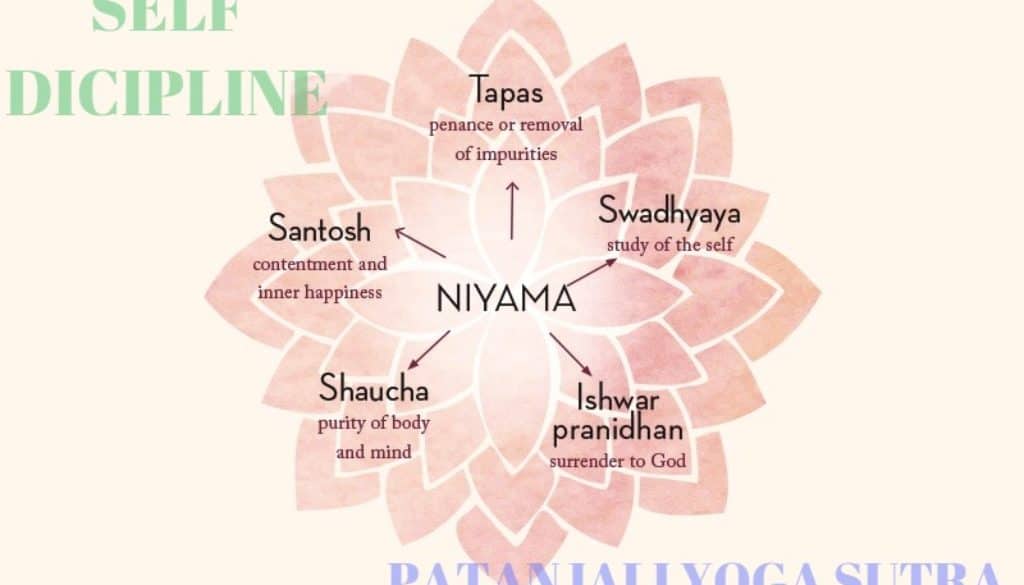YOGA DISCIPLINE
Yoga Philosophy:Yoga Discipline, Self-discipline & ardor. The exercise of tapas is one of the 5-niyamas or moral codes in Patanjali’s Yoga Sutras. In Sanskrit, the word faucet means “to burn”, which lends itself to the idea of tapas being a fiery ardor and severe, targeted within the yoga student.
The five Niyamas are as follows – Saucha (purity or cleanliness), Santosa (contentment or happiness), Tapas (austerity or discipline), Svadhyaya (self-look at) and Ishwara Pranidhana (surrender to God).
Five Niyamas
1. Saucha:
Saucha method cleanliness – external as well as inner, both within the body and the mind. Yoga subculture has given brilliant importance to physical and intellectual health. without a sturdy healthful frame, it’s miles hard to soak up higher practices of yoga. The body constantly produces waste depend on the shape of human waste, urine, sweat, mucus, and so on.
Cleaning the body of these impurities on an ordinary basis is critical to avoid infections. Yoga is going one step similarly and mentions sure strategies to preserve the body high-quality smooth. those strategies are called Sadkarmas (or the six purificatory strategies – Neti, Dhauti, Basti, Nauli, Kapalabhati, and Trataka) and they help within the internal purification of the organs. through those strategies, one also cleans the inner pranic paths or the nadis. diseases may be caused when organs do no longer get the required delivery of prana.
Other than this, Saucha also method inner purity of the thoughts. The thoughts have to be engaged in fine thoughts, which ends up in peace and Concord. within the science of Ayurveda, it’s miles said that negative idea styles have an effect on the body in a long run and result in diseases in the future. therefore, cleanliness of both body and mind is essential for correct health.
2. Santosa:
Santosa can be translated as contentment. For Yoga Discipline it is a way of being happy with what one has. this does not suggest complacency. Self-attempt is required for each worldly and spiritual pursuits. but Santosa means popularity; accepting existence in its totality. Santosa is done when we do not overly dependent on outside situations for our happiness. external events are not always managed via us. subsequently, relying on them can reason sorrow.
Spirituality is set in inner freedom. Our internal pleasure needs to not be depending on external factors. This inner contentment and independence are Santosa.
3. Tapas:
Tapas method austerity. In Sanskrit the word “Tapah” approach warmness. simply as gold is traditionally purified with the aid of heating it in the hearth, the mind is purified by means of doing austerities. Tapas may be interpreted in lots of ways. facing lifestyles with equanimity can also be termed as tapas. lifestyles are complete with opposites.
Residing with righteousness and retaining stable, balanced thoughts within the midst of all opposites is a type of austerity. Tapas also can mean positive unique practices achieved to subject the body, speech, and thoughts, like fasting, a vow of silence, the practice of yoga, isolated meditation retreats, and so on. however, the scriptures are against inflicting pain to the frame inside the call of Tapas.
The Bhagvat Gita’s 18th chapter, such austerities are termed as “tamasic” or the lower kind of Tapas. however actual Tapas eliminates the dullness and negativity of frame and mind. it’s miles a procedure of purification.
4. Svadhyaya:
Svadhyaya manner Self-observe. In Sanskrit “Sva” approach the Self and “Adhyaya” approach observe. Svadhyaya may be interpreted as examine of one’s own Self or Self-inquiry into one’s very own internal fact. traditionally, svadhyaya also can mean the have a look at scriptures that speak the method and methods of achieving the spiritual aim. spiritual information is contained within the Upanishads, the Puranas, the Bhagvat Gita, the Brahma Sutras, Ithihasa texts, and so on… Svadhyaya is about inner exploration.
The seeker has to undergo the method of Sravana (listening to the scriptures), Manana (self –mirrored image or taking into consideration on the reality revealed inside the scriptures) and Nidhidhyasana (abiding within the indescribable, silent internal fact after know-how the fact).
5. Iswara Pranidhana:
Iswara Pranidhana means to surrender to God. It approaches dedicating one’s thoughts and movements to God. It does no longer suggest sitting idle, thinking that God will take care of the whole thing. within the Bhagvat Gita’s chapter on Karma Yoga, it’s miles said that one has to perform moves according to one’s dharma. before performing the act, one must commit the action to God. additionally, after appearing the motion with discrimination and determination, one has to give up the end result of the movement to God. give up comes simplest once you put in self-attempt. whilst we are born, we are provided with certain physical and highbrow abilities. One has to apply those skills to carry out movement, but many things are past our competencies.
Also, the results of a movement aren’t absolutely beneath very own manipulate. it’s miles right here that surrender is needed. Surrenders start in which self-attempt ends. only whilst one has long past through the USA and down of existence will one broaden the adulthood and humility to surrender to God’s will or a better power. Humility is a remarkably pleasant that invokes grace. Humility isn’t always a weak point. In fact, it is a best of the thoughts dawning through revel in and know-how.
As a result, we see that the 5 Niyamas are focused on creating an internal disciple of frame and thoughts. That Yoga Discipline will fortify the frame and mind before we soak up higher practices of yoga. each Yamas and Niyamas are complementary to each different. both are required to broaden a balanced human being.
Yoga Therapy Foundation provides various TTC courses which help you to recreate a new life within you. Therapies with the Indian traditional methods like Ayurveda, Panch-Karma helps this body to create a new purified version of life.
Check How Yoga can Benefit your life Click here!
Want to learn how to recreate a new version of yours Click Here!
Regards,



